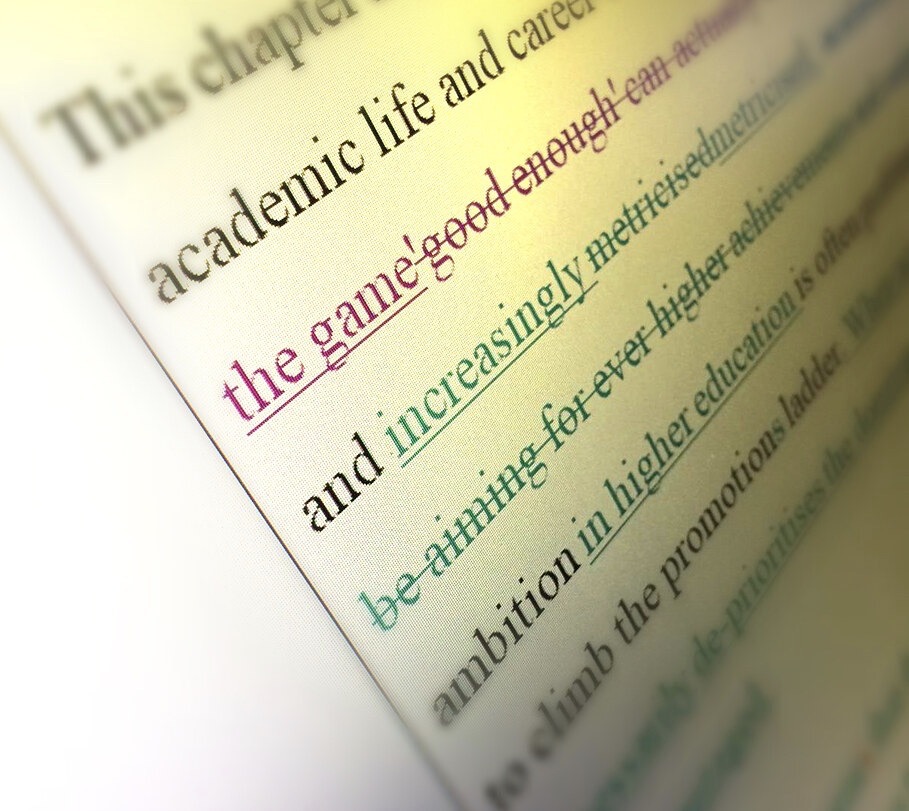Writing a story takes blood, sweat, and tears, and the process of revising one’s own work takes time and dedication. All this hard work culminates in a promising manuscript, but in order to achieve the most success, a manuscript needs the attention of a professional editor. Authors can hire freelance editors to work on their manuscripts, or they can go through the editing process with the publishing house that accepts their work. To receive the best editing, it’s important to know what to ask for—and that requires knowing the levels of editing offered. The most common types of editing fall into these four categories:
Developmental Editing
Also called substantive, structural, or content editing, developmental editing is big-picture editing. As Nancy S. Miller, the associate publisher and editorial director at Bloomsbury Publishing, says in her essay “The Book’s Journey” (published in the book What Editors Do), this form of editing addresses issues with “structure, focus, pacing, plotting, shaping an argument, gaps in the narrative, believability of characters, enhancing or cutting subplots, excising extraneous material, and interweaving strands into a cohesive whole,” which gets the book roughly into shape. Some books don’t need any developmental editing at all; some need five rounds. It’s done on a case-by-case basis, and many authors find it useful to begin developmental edits before the manuscript is complete to save time and money.
Line Editing
Also called stylistic editing, this is paragraph-level editing that focuses on sentence flow and structure. Editors at this stage ensure that the tone and writing style of the book remain consistent throughout by carefully evaluating the writer’s syntax, phrasing, transitions, and dialogue. They will often cut sections of paragraphs or move them around in order to achieve this. This level of editing often overlaps with developmental editing and can even be entirely included in the developmental edits.
Copyediting
Copyediting is sentence-level editing that ensures consistency and proper grammar. If a character’s name is spelled “Christina” in chapter three but “Kristina” in chapter seven, it is a copyeditor’s job to catch it. Copyeditors make sure that no one’s eyes suddenly change color, that the verb tenses are correct, and that there aren’t any spelling or punctuation errors. This level of editing should not include any substantial changes to the manuscript.
Proofreading
Proofreading involves comparing the edited manuscript with the designed version. A proofreader catches errors that were introduced during the design process, as well as sneaky errors that weren’t caught during the copyedit. Proofreaders will also highlight any design issues, such as orphans and widows. If the book is to be published as an ebook, proofreaders will view it on an ereader to ensure that all the coding has been done correctly and everything appears as it should. Proofreading is a time-consuming process for an editor, as it requires a keen eye and several passes over a manuscript.
Though all this editing may seem like overkill to a new author having to go through the entire process, every editorial stage has its purpose. In fact, some books are able to skip the earlier steps if they have been sufficiently edited before reaching the publishing house’s inbox. In the end, the editing process is there to improve a text, not hack away at it needlessly. Editors are often the writer’s biggest fans, and their job is to elevate the text to the heights they know it can achieve.

